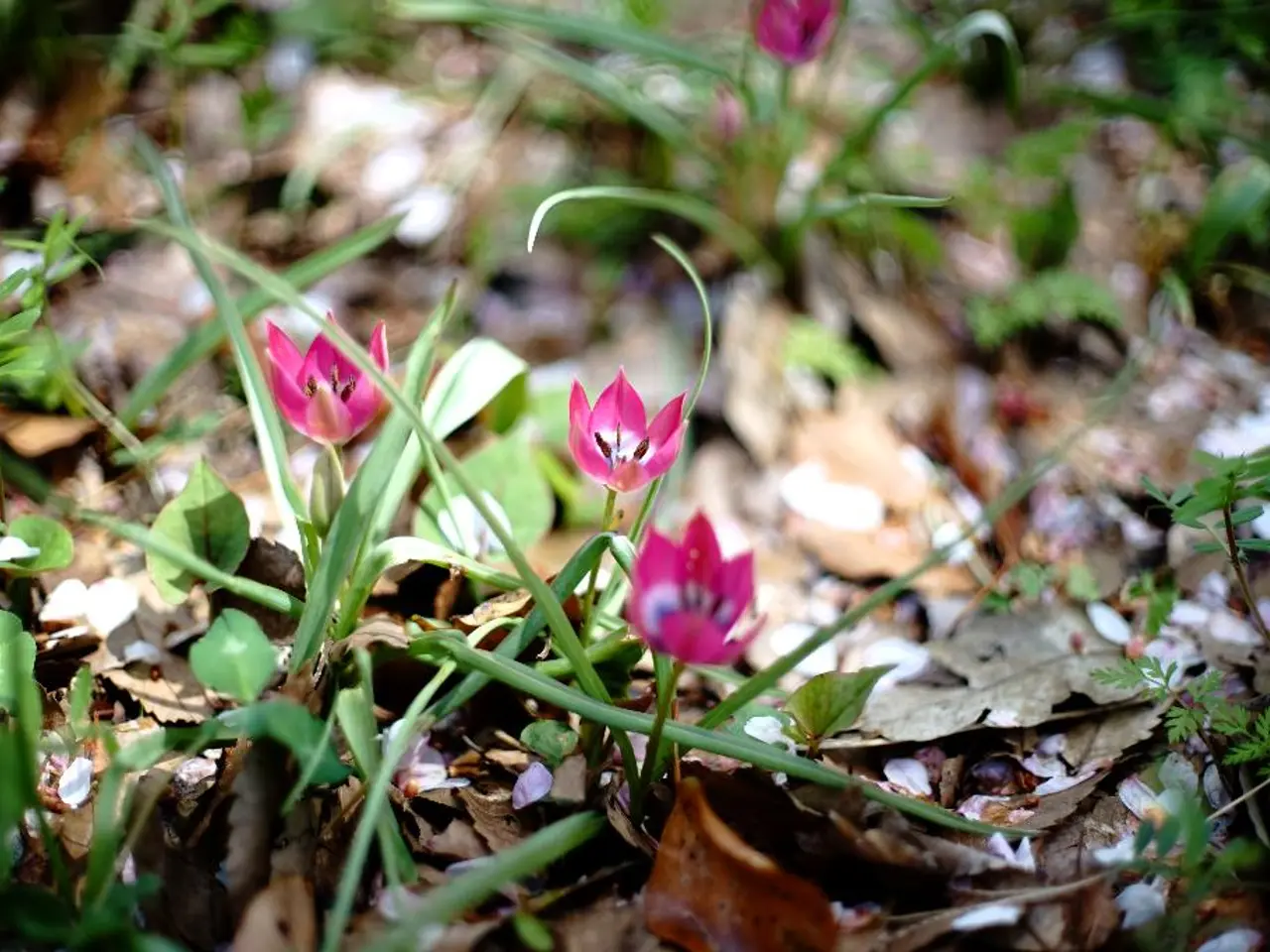Tending to a Garden for Novices: Essential Tips for Garden Maintenance
In the world of gardening, watering and feeding plants are essential practices for promoting strong growth. Here are some guidelines to help beginners establish healthy routines.
When and How to Water
Watering plants is all about timing. In hot weather, watering in the evening is best, while in cold or dull weather, watering in the morning is preferred. The key is to water deeply but infrequently, aiming for the root zone. This means watering when the top 2 inches of soil are dry, and ensuring the water penetrates at least 6 inches into the soil to encourage strong root growth.
For container plants, especially in hot weather, you may need to water daily or even multiple times a day. Smaller pots dry out faster, so pay attention to the container size and material. A helpful tip for indoor plants is bottom watering, which helps prevent overwatering and fungal issues.
Feeding Plants
Feeding plants is just as important as watering. Beginners should use appropriate fertiliser according to the plant type, ideally balanced or specific to the plant's needs. It's important to feed plants when they are actively growing, not during dormancy.
Other Beginner Tips
- Allow plants' roots to grow deeper by letting the soil dry between waterings, which helps plants become more drought resilient.
- Observing an “indicator” plant like squash, whose leaves droop quickly when dry, can help gauge watering needs for a whole garden.
- For vacations or absences, self-watering systems like water spikes or DIY wick systems can maintain consistent watering.
Signs Plants Need Water
Wilting leaves are a clear sign that a plant needs water. For gardens, using a sensitive “indicator” plant can help gauge watering needs.
Other Important Practices
- Pruning should be done carefully during nesting season, checking hedges for nesting birds before pruning.
- After formative pruning, it's a good idea to prune annual hedges, although formal hedges may need pruning twice yearly to keep them looking smart.
- Regular deadheading of bedding plants, herbaceous perennials, roses, and bulbs can keep them flowering throughout summer and into autumn.
- In the wild, nutrients are replenished through leaf litter and plant decomposition, but this process is often absent in gardens.
- Plants absorb nutrients and minerals such as nitrogen, phosphorus, and potassium through their roots.
- Pruning plants involves cutting off parts to restrict size, encourage growth, or remove dead or diseased material.
- Established plants require less watering than seedlings and plants in containers or sunny borders.
Feeding the Soil or Plants
Feeding the soil or plants helps promote leafy growth, root development, flower and fruit development, and overall plant health. Organic fertilisers, such as nettle or comfrey feeds and well-rotted manure, can be used to feed plants. Inorganic fertilisers, made from synthetic chemicals, are another option.
Pruning
Pruning isn't difficult or complicated; simply removing dead, diseased, broken, crossing, and crowded branches is often enough for many plants. Wildlife hedges should be pruned every other year, as some butterfly eggs may be removed from plant stems in the pruning process.
By following these guidelines, beginners can establish healthy watering and feeding routines to support strong plant growth. Happy gardening!
Incorporating the suggested guidelines for beginner gardeners, it's essential to establish a balanced lifestyle for plants that includes home-and-garden practices such as regular watering and feeding. By learning when and how to water, using appropriate fertiliser for different plant types, and feeding plants during active growth, one can encourage strong root development and overall plant health.




